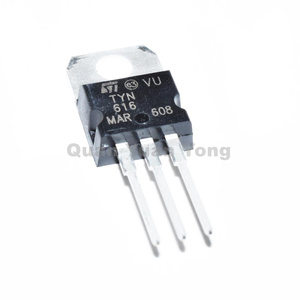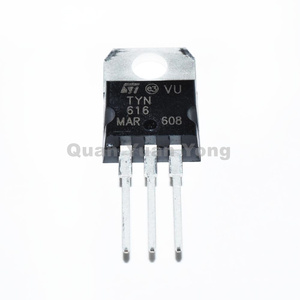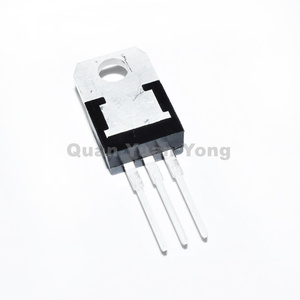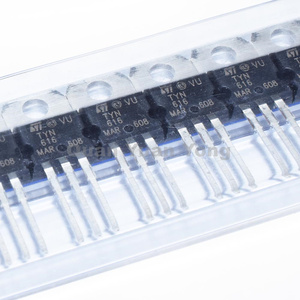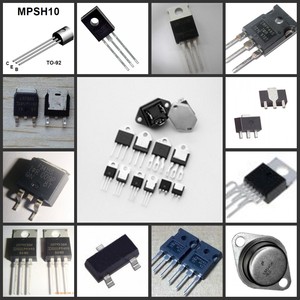Types of Transistors in Computers
To know the different types of transistors in computers, it is crucial to understand what a transistor is. Transistors are semiconductor devices that act as a switch or amplifier. They are tiny electronic components that control and stabilize electric currents and are made of silicon. A transistor is the fundamental building block of all computers. They work by using an electric field to control the flow of current between two conductive areas, which can turn on and off depending on the input signal. This allows transistors to switch and process digital information, making them essential for all digital circuits, including processors, memory, and logic. In simple terms, transistors are used in computers to control and manipulate electronic signals, which is how information is stored, processed, and transmitted electronically.
Transistors are essential components in computers and a critical invention in the electronic age. Their invention and subsequent development paved the way for creating smaller, faster, and more reliable electronic devices. Thanks to transistors, computers can perform millions of calculations per second, making them powerful tools for processing and storing information electronically. A transistor can turn on or off an electric current, often referred to as binary 1 and 0. The switching mechanism of transistors creates the basic memory storage element. The different types of transistors include:
- Bipolar Junction Transistor (BJT): Designed to use both types of semiconductor material, this transistor has three regions known as the emitter, base, and collector. In the process of signal amplification and switching, the transistor's junctions are switched on and off. The working principle depends on the current from the emitter to the base being amplified and drawn from the collector to the emitter.
- Field-Effect Transistor (FET): It has three terminals known as source, gate, and drain. A FET works as a voltage-controlled device. Therefore, the voltage at the gate terminal controls the current flowing between the source and drain terminals. Unlike BJT, FET works by using an electric field to control the current.
- Insulated Gate Bipolar Transistor (IGBT): This is a type of transistor with a gate structure similar to that of MOSFET and bipolar characteristics. It is used in high-voltage and high-current applications like electric cars and induction heat treatment due to its efficiency and versatility.
- Darlington Transistor: A configuration of two BJTs often located in a single package. The output current of the first transistor feeds the base of the second one. As a result, they are highly sensitive and have a high current gain.
- Metal-Oxide-Semiconductor Field-Effect Transistor (MOSFET): A MOSFET is one of the most important transistors. Taking the form of an integrated circuit, it can switch or amplify electronic signals in computers.
- GaN FET: Known as a gallium nitride field-effect transistor, it is an innovative power semiconductor using wide bandgap technology.
Features and functions of transistors computers
With the advent of modern technology, the way people perform tasks has evolved. Today, tasks such as a simple text-based search on the internet, video games, and scientific simulations are carried out on transistors computers. Understanding how these computers work will help see the evolution that has happened in the industry.
Generally, computers using transistors replace the vacuum tubes used in early computer models. Transistor technology brought about the development of smaller, faster, more reliable, and energy-efficient computers. The table below summarizes the functions and features of transistor computers:
- Miniaturization: Transistors are small components. They allowed the making of computers that are compact and lighter without compromising power. This miniaturization paved the way for integrating many transistors into a single chip, inverting logic gates on a circuit board, and making it easier to store information electronically.
- Speed: Transistor computers worked much faster than the vacuum tube models. Transistors have faster switching speeds, increasing how quickly calculations and operations are executed. The increased speed directly translates to improved performance. This allows for complicated tasks to be completed quickly, raising productivity levels.
- Reliability: Computers that used transistors were more reliable and stable than their vacuum tube predecessors. Transistors have fewer chances of malfunction and breakdown during operation because they have no vacuum tubes. This improved reliability means less downtime and lower maintenance costs.
- Energy Consumption: Transistor-based computers consume less power than vacuum tube models. It was possible to keep computers with transistors on for a long time without worrying about energy costs. Low energy usage also enabled integrating many transistors onto a single chip, increasing computation power while keeping energy costs low.
- Heat Generation: Transistors generate less heat compared to vacuum tubes. Less heat makes it possible for computers with transistors to run for long hours without the risk of overheating. Reduced heat levels improved the overall reliability and performance of computers.
- Circuit Complexity: Transistor technology allowed for increased circuit complexity in computers. More transistors on chips made it possible to handle complicated tasks, store more data, and offer more features. Complex circuitry enhanced the functionality and performance of computers.
Scenarios
Applications of transistor computers vary widely based on the type of transistor and the industry. Some key applications include:
- Computing: The primary use of transistors in computers is to perform logical operations and store information. A transistor basically decides whether a 0 or 1 binary digit is present, so millions of transistors working together can store and process digital information, which is essential for all computer functions.
- Mobility: Thanks to a transistor, portable electronic devices such as smartphones, tablets, and laptops can operate. Lower power consumption has made it possible for these devices to work efficiently on batteries while still being small. The production method of integrated circuits also enables mass production, which reduces the cost of electronic devices.
- Communication: Transistors are crucial for modulating, amplifying, and transmitting electromagnetic waves that allow broadband communication. All networks for broadband comms, from wired networks like Ethernet to wireless networks like 5G and Wi-Fi, rely on transistor technology to increase the speed and efficiency of data transmission.
- Consumer electronics: TVs, radios, and audio systems are all examples of consumer goods that have transistors and that have been improved in recent years due to digital technology. Audio recording and playback now use compact flash storage, which is controlled by digital circuits that contain transistors.
- Industrial control: A computer transistor is crucial in automated industrial processes to control machines and monitor equipment. Programmable logic controllers and sensors all have transistors, which help improve efficiency, accuracy, and reliability in manufacturing industries.
- Healthcare equipment: Medical devices such as pacemakers depend on integrated circuits containing transistors that help monitor the heart's condition and many other applications for digital health equipment.
- Home appliances: Modern appliances like washing machines, dishwashers, and refrigerators have microcontrollers with transistors that enhance their functionality with smart features.
How to choose transistors for computer
The modern population uses the transistor every day without even knowing it. When picking the right miniature transistors to buy, it's essential to consider which one will better suit the project.
Here are a few things to think about before buying:
- Budget: When choosing the right small signal transistor to buy, it's essential to consider costs versus benefits. Some transistors offer multiple benefits for a lower price, whilst others may be more expensive and offer fewer extras.
- Project: The miniature transistor should be suited to the specific project so that it can be successfully implemented. Many thousands of different kinds of transistors are on the market today, so troubleshooting and completing any project should be fairly easy.
- Features: Specific transistors will have particular features when compared to others. They might include specializations like RF transistors with frequency characteristics and fast-switching transistors with turning-on time.
- Power: In some cases, power impinges upon the temperature of the transistor, and its ability to resist heat will have an impact on its performance and cost.
- Reliability: When looking for miniature transistors to buy in bulk, it is essential to consider their reliability and the vendor from whom they are purchased. Some vendors offer discounts for bulk purchases and may not be less well-known for the quality and reliability of their products.
Q&A
Q1: What do transistors in computers do?
A1: They help the CPU to compute and control signals. Transistors are key to digital logic design. Without them, it would be impossible to create a switching mechanism or memory cells that hold information.
Q2: How many transistors are in a computer?
A2: A wide range of CPUs and GPUs are available, with models containing between 10 million and 70 billion transistors. The Intel Core 2 Duo, for example, has 291 million transistors.
Q3: What were transistors in computers made of?
A3: Transistors were made of germanium, a material that exhibited semiconductor properties but had a high resistivity. The first transistor was invented in 1945, and transistors replaced vacuum tubes in radios by 1954.


























































































































